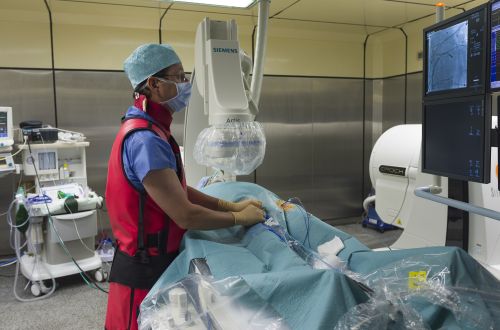

The challenge will be balancing the excitement of their potential with the meticulous work of proving their safety, reliability, and cost-effectiveness.

By Matthew A. McIntosh
Public Historian
Brewminate
From Science Fiction to the Surgical Suite
In operating theaters where human skill meets technological ingenuity, a new class of surgical assistant is emerging. They are not towering robotic arms or hulking machines behind sterile glass, but tiny magnetic millirobots, aptly nicknamed TrainBots, that can travel through the body’s narrowest passageways with a precision that traditional instruments cannot match.
The concept, recently detailed in research such as the study indexed at the U.S. National Library of Medicine, pushes minimally-invasive surgery into territory once reserved for speculative fiction. These millirobots can be guided through biological lumens, the hollow channels that wind through the human body, to deliver targeted therapy, perform microscale procedures, or even remove obstructions.
How TrainBots Work
TrainBots are assembled from modular, magnetically-responsive segments that can connect and disconnect as needed. Each segment is powered externally through magnetic fields, allowing the entire “train” to be navigated from outside the body without onboard motors or complex wiring. Surgeons control their movement by adjusting magnetic gradients, directing the bots through intricate pathways that conventional endoscopes or catheters might struggle to traverse.
The modularity is more than a design flourish. In surgical scenarios, one segment can carry a micro-camera, another a cauterization tool, and yet another a drug delivery capsule. This configuration allows for multi-functionality in a single pass, avoiding the need to withdraw and reinsert instruments, a step that can prolong procedures and increase patient risk.
The Surgical Promise
The advantage is not simply smaller incisions or reduced trauma. TrainBots can reach places that have been functionally inaccessible with current tools. In the bile ducts, for instance, they could deliver targeted electrocauterization to control bleeding or remove gallstones without the need for open surgery. In the gastrointestinal tract, they could perform site-specific interventions without disrupting surrounding tissue.
In early preclinical testing, these bots have demonstrated the capacity to navigate complex geometries and maintain stable positioning in fluid-filled environments. The magnetic control allows them to adapt in real time to unexpected changes in the surgical field, a flexibility prized by surgeons dealing with the body’s unpredictable interior landscapes.
A Field Still Finding Its Limits
Despite the excitement, the technology is not without challenges. Operating magnetic millirobots requires sophisticated external control systems and precise imaging to track their position. Current methods rely heavily on specialized MRI-compatible setups or advanced fluoroscopy, tools that are not universally available in all surgical centers.
There is also the question of safety in live patients. While animal models have shown promise, human anatomy presents more variability, and the consequences of a mechanical failure or a magnetic control error could be severe. Retrieval protocols for malfunctioning bots must be reliable before widespread clinical adoption can be considered.
Moreover, the regulatory path for devices that actively move inside the body under external control is complex. Agencies will need to consider not only the safety of the hardware but also the robustness of the control software and the cybersecurity safeguards that prevent any unauthorized manipulation of these systems.
Cultural and Clinical Context
The arrival of TrainBots is part of a broader shift toward less invasive, more precise surgical interventions. Over the past three decades, minimally-invasive surgery has reduced patient recovery times, minimized scarring, and decreased the risk of infection. Magnetic millirobots represent a potential next leap, one where the scale of intervention is so small, and the control so precise, that surgery begins to resemble interventional navigation more than cutting and suturing.
Yet as with all technological revolutions in medicine, there is a risk of widening the gap between high-tech centers and resource-limited hospitals. If the cost of adopting and maintaining TrainBot systems is high, their benefits could initially be limited to wealthy urban institutions, leaving rural and low-income patients behind. The very technology that promises to democratize access to difficult procedures might, without deliberate policy planning, deepen existing disparities.
Looking Ahead
The researchers behind these systems remain cautious but optimistic. They envision a future in which TrainBots become as common in certain specialties as laparoscopic tools are today. With further refinement, they could be used not only for surgical interventions but also for routine diagnostic inspections, drug delivery in hard-to-reach tumors, or precision biopsies that minimize tissue disruption.
For now, magnetic millirobots remain in the experimental and early clinical testing phase. The challenge will be balancing the excitement of their potential with the meticulous work of proving their safety, reliability, and cost-effectiveness in real-world hospital settings. If they succeed, the metaphor of a train moving along a track will take on new meaning in medicine. Each patient’s internal pathways will become a network to be navigated, and these tiny, magnetically steered trains may carry surgeons further into the body’s interior than ever before, not with force, but with finesse.
Originally published by Brewminate, 08.19.2025, under the terms of a Creative Commons Attribution-NonCommercial-NoDerivatives 4.0 International license.


